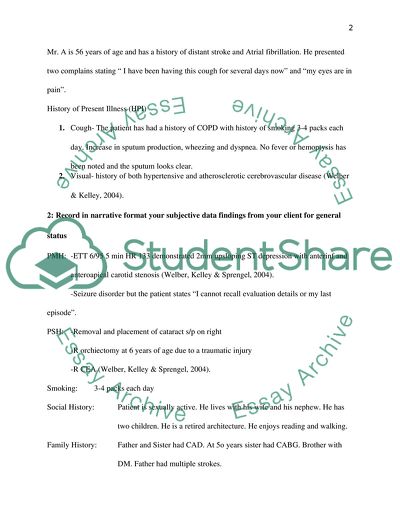Not Found (#404) - StudentShare. https://studentshare.org/nursing/1806000-subjective-and-objective-data-and-assessment-on-a-patient
Not Found (#404) - StudentShare. https://studentshare.org/nursing/1806000-subjective-and-objective-data-and-assessment-on-a-patient.


